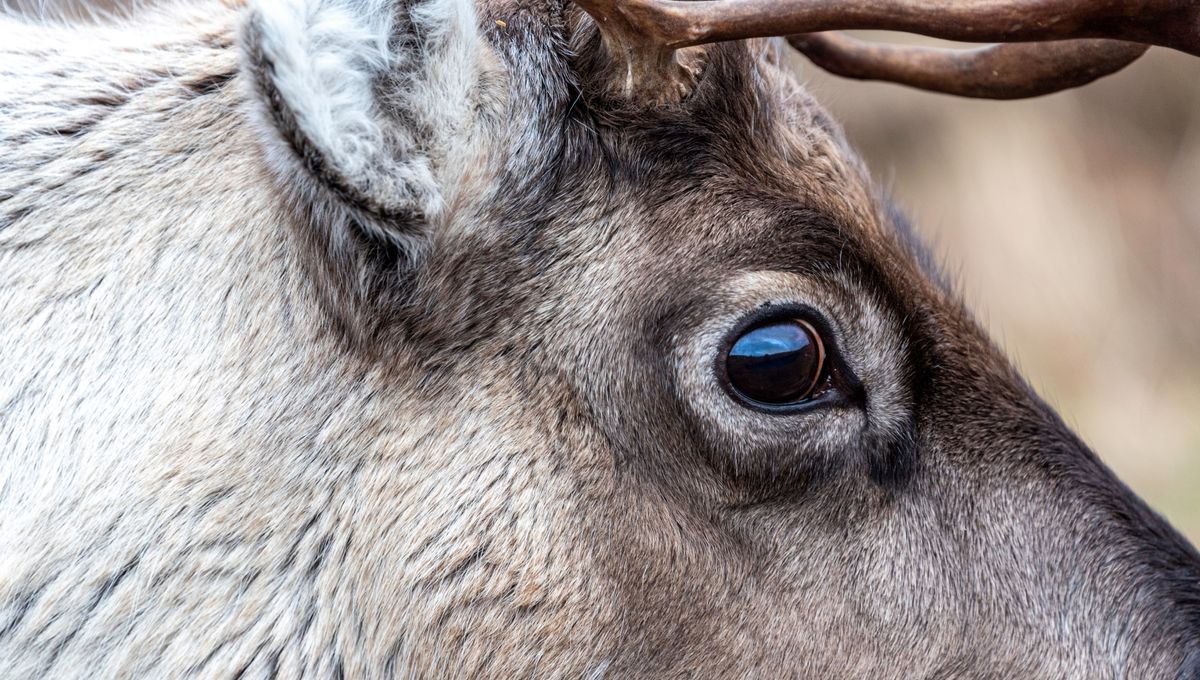
During the chilly and long twilight hours of winter, reindeer make a bizarre change unique amongst daytime mammals – their eyes change color. Researchers now believe this oddity gives them specialist night vision, helping them to seek out a tasty lichen dinner.
The discovery that the surface of reindeer eyes changes color from golden-orange in the summer to blue in the winter was made from a big bag of eyes back in 2013 and ever since, scientists have been trying to figure out exactly why this change happens.
It had been established that the color shift allows reindeer eyes to transmit ultraviolet (UV) light, but that’s risky business in snowy conditions where DNA-damaging UV light is also reflected back at them. So why would they keep a potentially dangerous trait? There was a hunch that it might be an adaptation to help them detect food sources, such as lichens – one that researchers from the University of St Andrews and Dartmouth College sought to investigate.
The team set out in search of lichens in the Cairngorms National Park, Scotland, where the moss-like organisms are a staple of the reindeer diet. Taking photographs of them under UV light, the researchers discovered that different species of lichen absorb or reflect UV light differently. Importantly, they also found that reindeer tend to feed on the strong absorbers, suggesting their sensitivity to UV helps them to detect lichens amongst the snow.
“To our eyes, just like for most mammals, pale lichen in white snow is incredibly hard to spot! But to reindeer eyes, the species they need to feed on would stand out as dark patches in the much more reflective snowy landscape,” explained Dr Catherine Hobaiter, who co-authored a study describing the findings, in a statement.
Study lead Professor Nathaniel Dominy added: “If you can put yourself in their hooves looking at this white landscape, you would want a direct route to your food. Reindeer don’t want to waste energy wandering around searching for food in a cold, barren environment. If they can see lichens from a distance, that gives them a big advantage, letting them conserve precious calories at a time when food is scarce.”
Or, as the authors write in their paper, the findings “cast new light on the benefits of a luminescent nose – it may light the way for Santa to see by, but it is Rudolph’s blue-eyes that allow him to find dinner after a long Christmas season.”
The researchers suggest that the next step could be to investigate if there’s a link between reindeer’s UV sensitivity and what they feed on. Cladonia, a genus of lichens popular with hungry reindeer, have antioxidant properties. Combined with other foods, the team believes it could give reindeer protection from UV damage.
Changing the color of their eyes isn’t the only superpower that reindeer have – they might not actually have glowing noses or the ability to fly, but they have some other nifty tricks up their sleeves.
The study is published in i-Perception (brilliantly entitled “Reindeer and the quest for Scottish enlichenment”).
Source Link: Reindeer’s Freaky Eyes Give Them In-Built Night Vision For Spotting Snacks